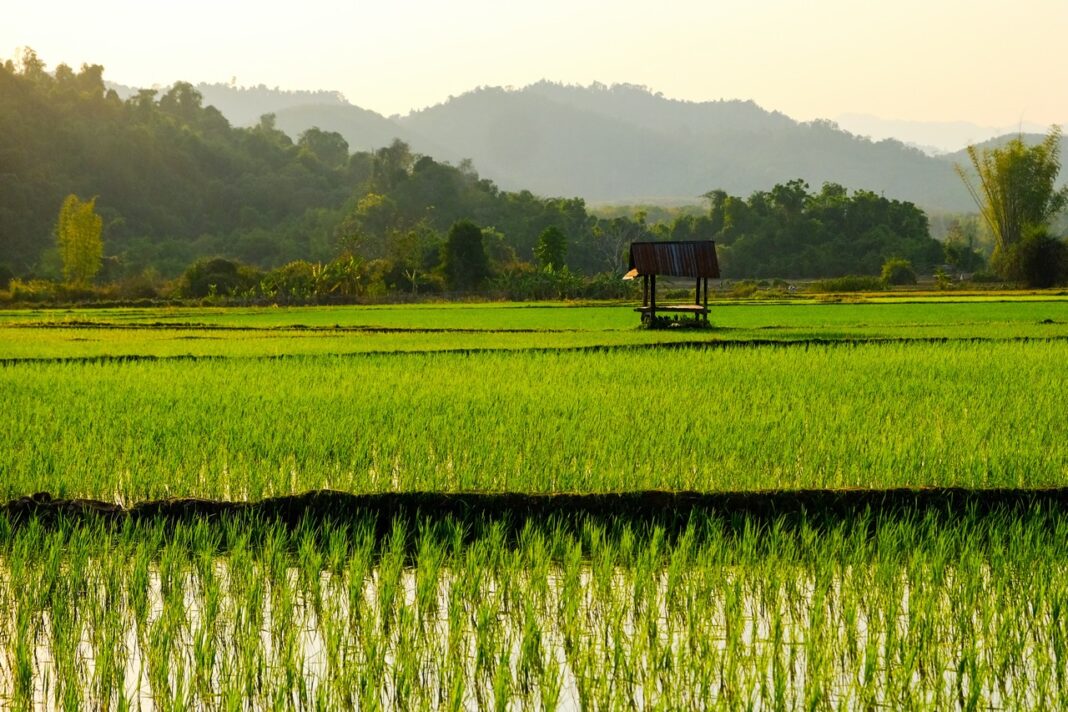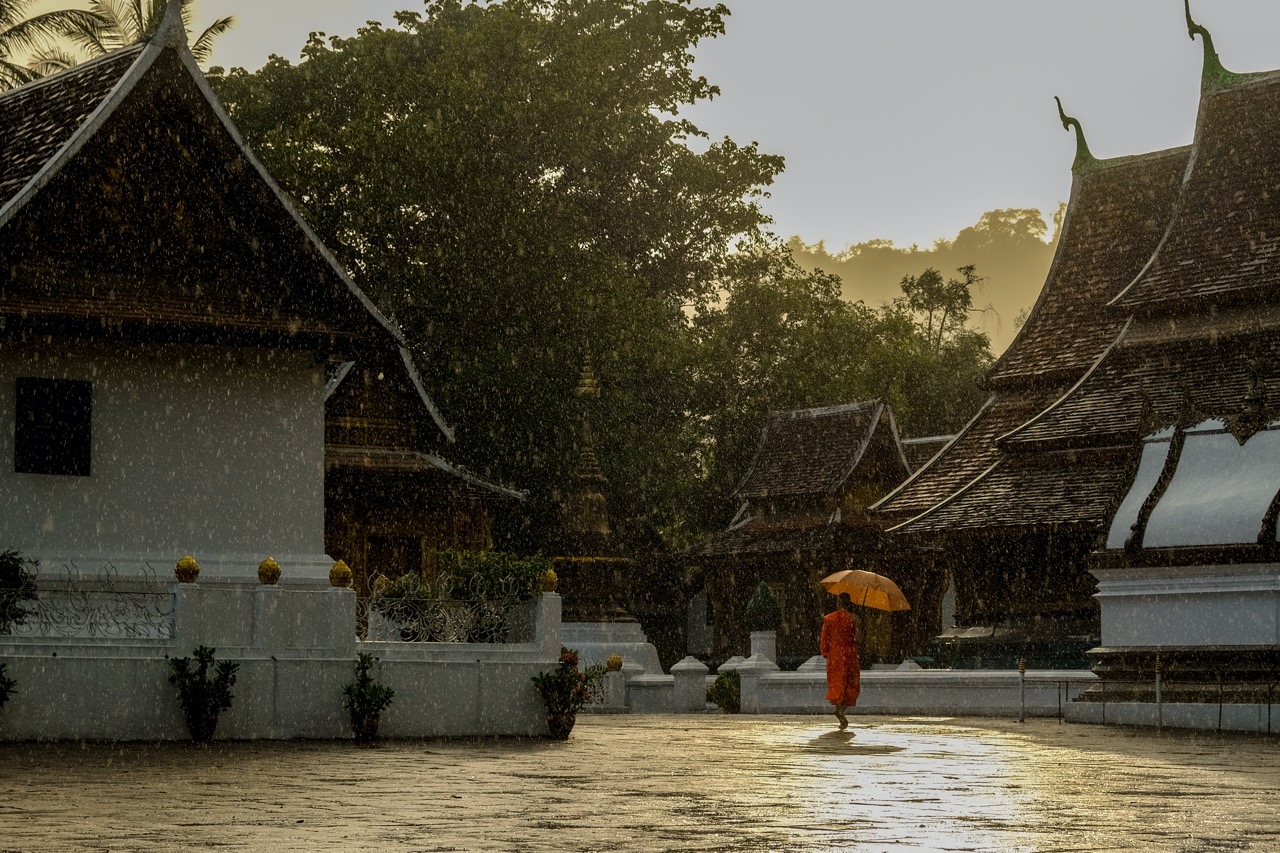
The Serenity of Luang Prabang’s Green Season
Text by: Anita Preston
Photos by: Anita Preston / Evensong Film
Rolling fluffy clouds, lush vegetation that springs up seemingly overnight, verdant rice fields, the Mekong at its most abundant, and markets brimming with fresh fruits and vegetables, and hardly any tourists. This is the green season. Skies appear mysterious, and a myriad of temple spires peak out under wisps of clouds that seem to cling to the mountainsides. Dramatic and photogenic, Luang Prabang is even more beautiful during the green season.
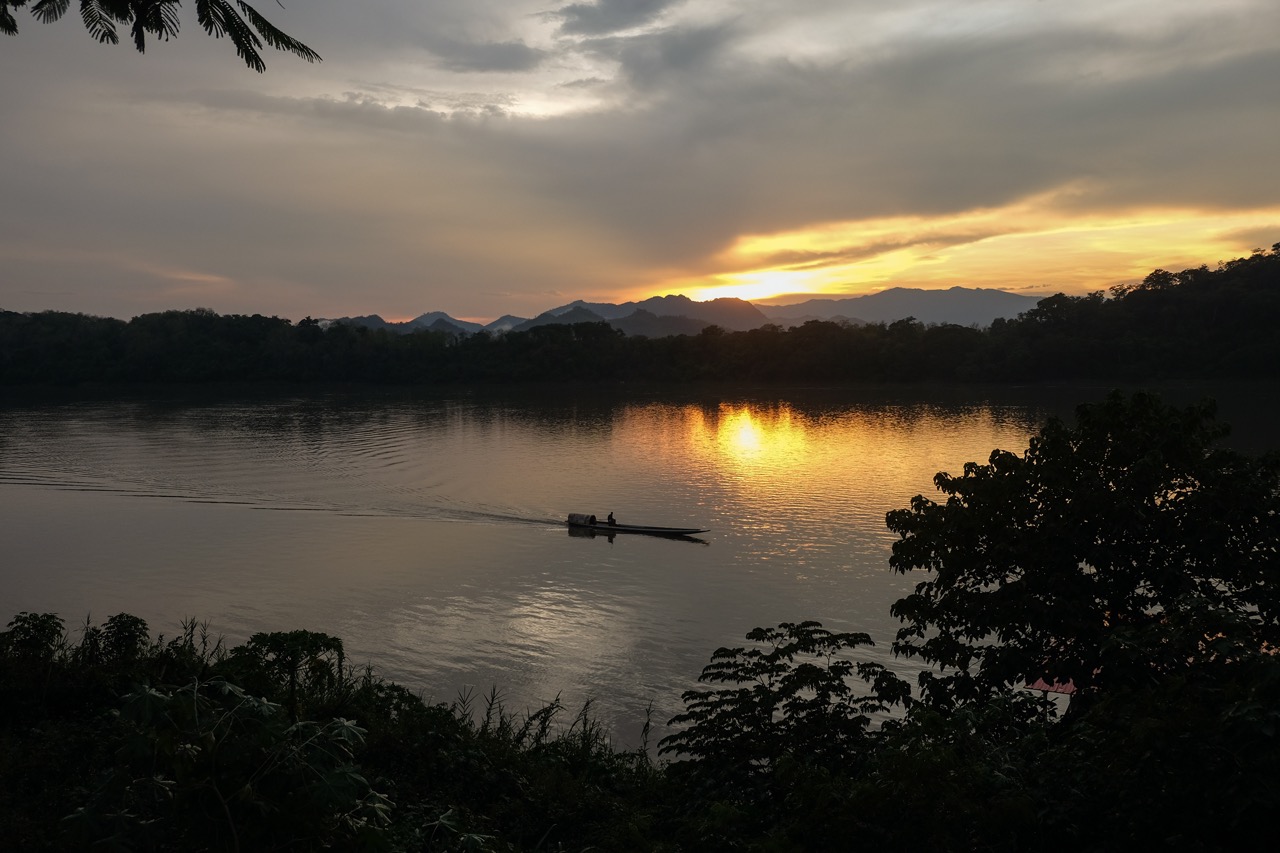
After the heat and humidity reach their peak in April, the weather begins to change. The pace of life begins to slow down, and the green season builds up. Each day, clouds gather and rain becomes more frequent until by mid-June, it will be raining each day. It’s not incessant day-long rain, it’s brief cooling showers, cleansing and refreshing, and voila, the sun comes out. Mother Nature makes it easy to plan and predict. If it starts raining in the morning, it will uncannily rain at the same time each day and for the following days.
Tourist numbers drop significantly, and this sleepy town becomes even more sedate. Buddhist Lent (Khao Phansa) begins this year on July 10. During Lent, weddings and celebrations cease, and people abstain from drinking. If you are in Luang Prabang at this time, it’s extra auspicious to give alms on this holy day. Monks will sequester themselves in the temple to study and meditate, and are forbidden to travel until the full moon in October.
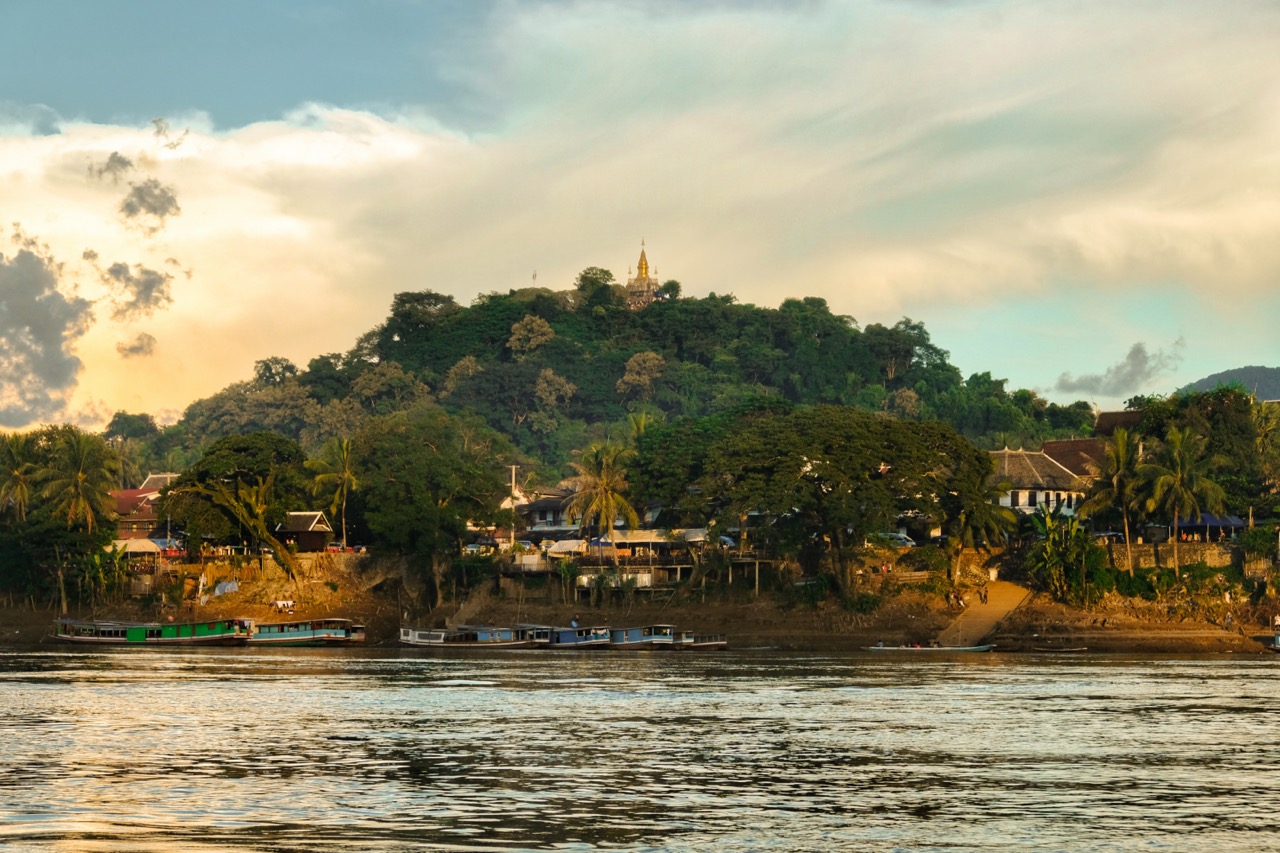
Produce at the market is best in the green season. A trip to the market is a must, not least for the display of items you won’t have seen before. Luang Prabang has some of the most diverse fruits and vegetables in Asia because people bring produce to sell from their own land that they grew themselves or foraged from the jungle. In the green season, it’s the time for mushrooms; it’s said that up to sixty species of mushrooms are found in the area, and some yet to be classified. Take advantage of the deliciously sweet, super-cheap pineapples, and marvel at the fresh bamboo shoots just picked from the hillsides outside of town.
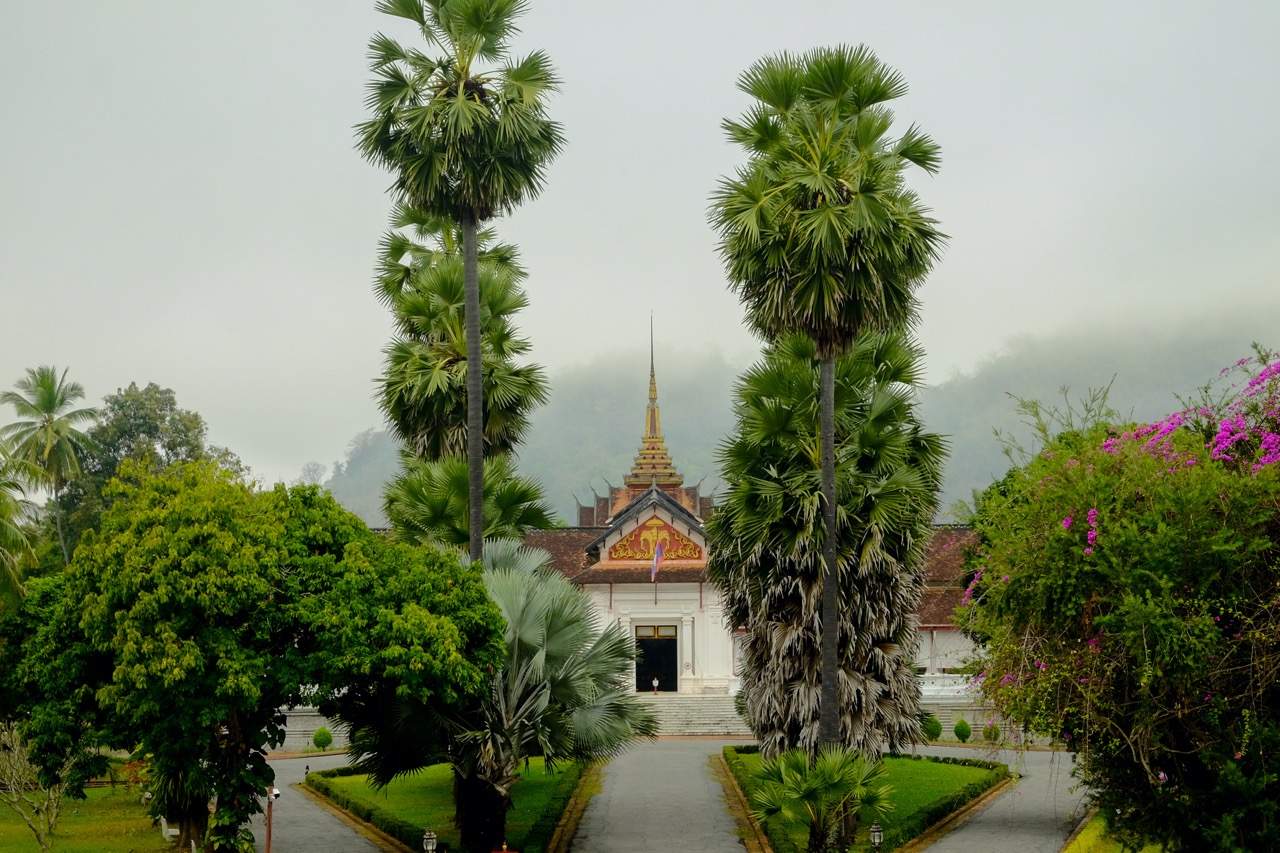
Phousi Hill is a great location to admire the view and take in the scenery. The climb is much easier when the weather is cooler, and the view under wondrous skies can be stunning. The slopes are covered with flamboyant flame trees covered in bright red-orange blooms, especially impressive when the sun hits them and they seem to be on fire.
Renting a bicycle and cycling out to the golden spired Wat Pa Phon Phao, just outside the city, is another option. Stop by the old bridge on your way to gaze at the splendid view of the Nam Khan River and Wat Pa Phon Phao backed by blue-green mountains and coconut palms sloping down to the river. You can climb to the top of the temple if you would like to see its simple but unique interior, including its own version of painted scenes from the life of Buddha. Behind the temple, a gentle precipice overlooks the city, from the saw tooth-shaped karst mountains in the distance, to the airport on the other side, the perspective is sweeping and dense with trees and luxurious vegetation.
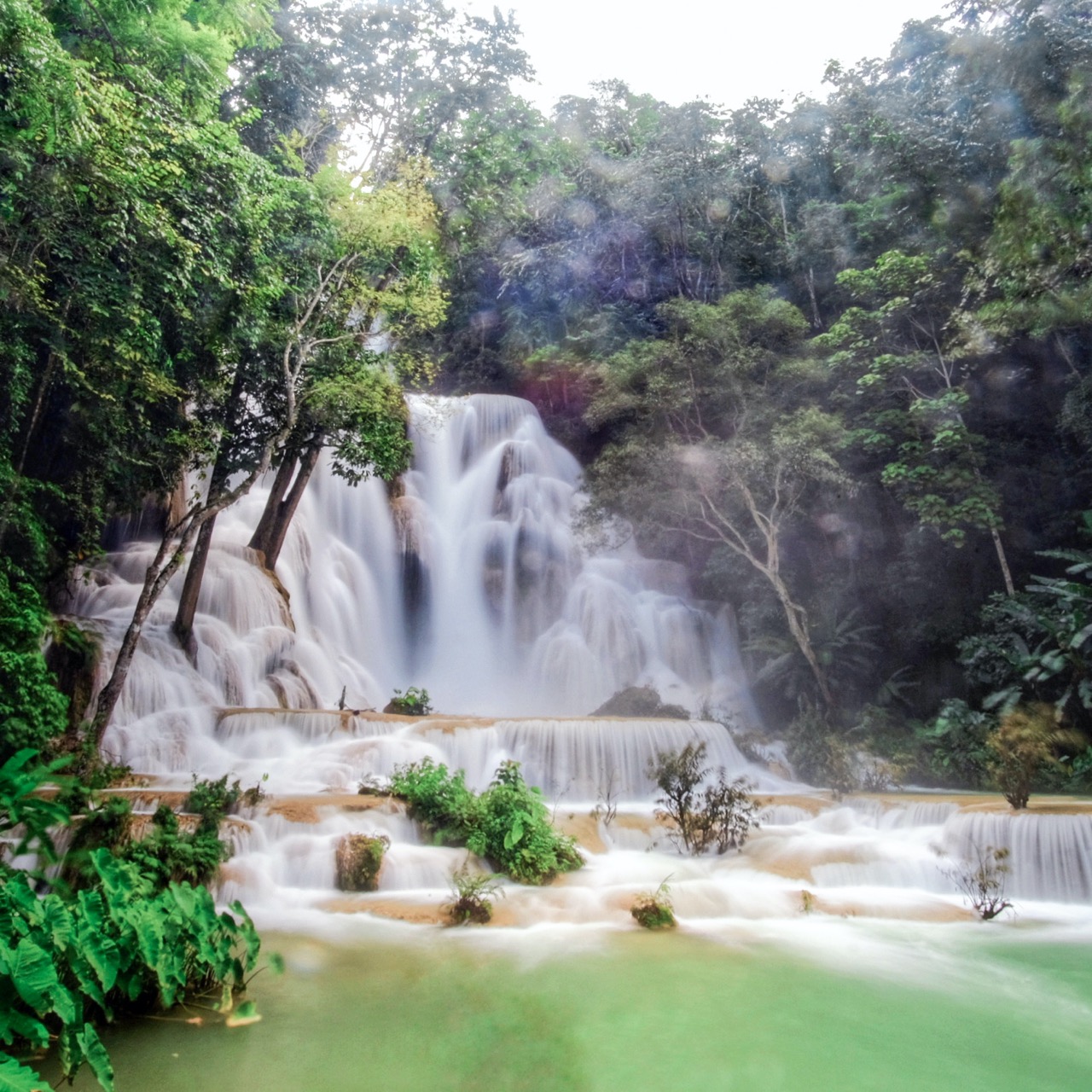
Kouang Si waterfall is also a good place to visit in the green season. On the way there, you will see bright green rice fields with grains ready for harvesting and farmers working in their fields. The falls themselves will be buzzing with life. Exuberant greenery hides bright beetles, grasshoppers, butterflies, and vivid spotted centipedes. Cicadas buzzing, crickets chirping, and the roar from the waterfalls make a natural symphony of sound. Waxy torch ginger and hot pink and yellow heliconia are some of the exotic blooms in the forest around the falls.
The Mekong is at its highest, and its banks are most fertile. It’s the best time to meander slowly up to Pak Ou caves and see the hundreds of Buddhist statues placed by generations of devotees. If you don’t want to go that far afield, Chomphet is also a great option. Take the public ferry across and explore the other bank of the Mekong. Chomphet has many delights, including numerous beautiful and important temples, the pottery village at Ban Chan, where you can see traditional pot making techniques, and an interesting local produce market. The view of Luang Prabang from the other side of the Mekong is also sublime, especially in late afternoon.
For tourists, the green season is one of the best times to visit Luang Prabang and skip the crowds. Accommodation prices are lower, and the scenery is more spectacular. Temples and other attractions will be significantly less busy, and you have a better chance of having the whole place to yourself.
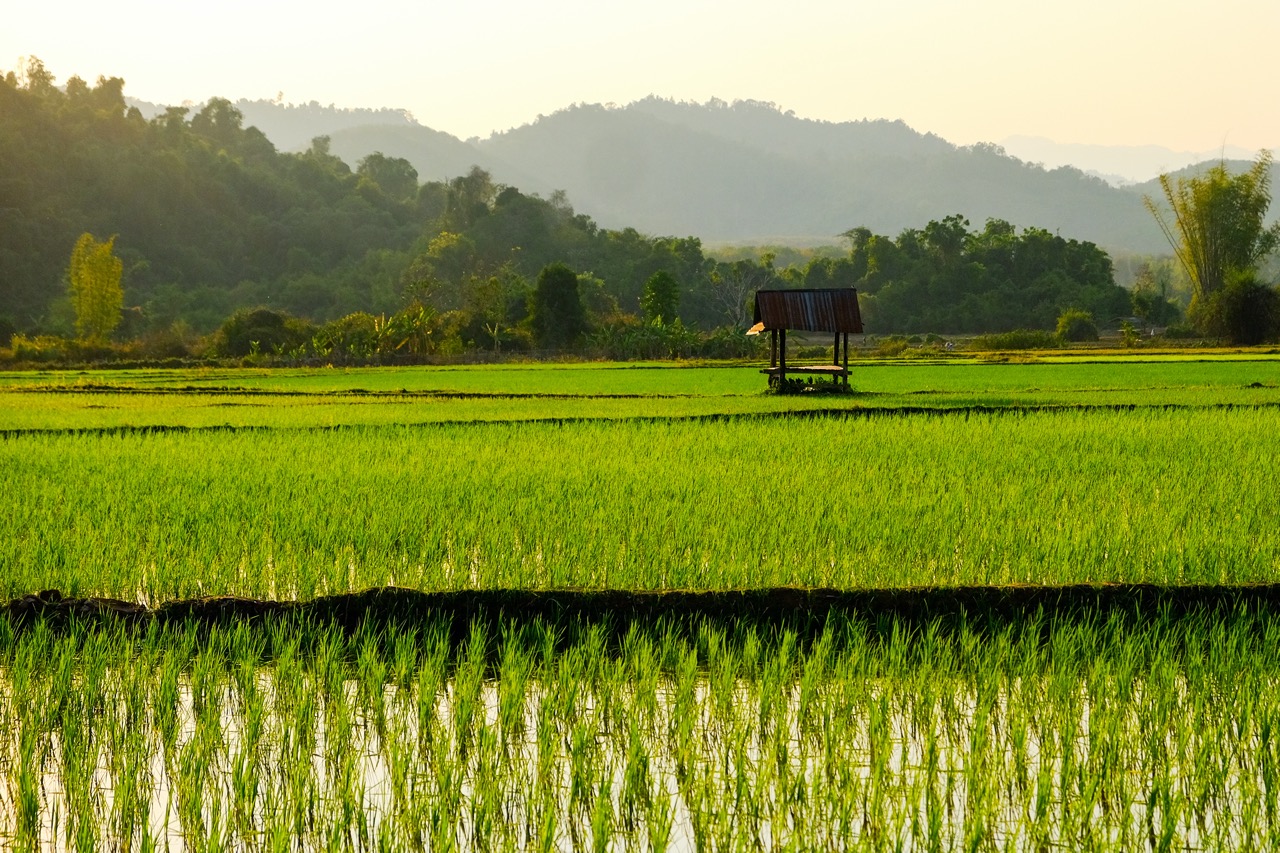
Getting there:
Lao Airlines has frequent flights to Luang Prabang from Vientiane, Chiang Mai, Hanoi, and Pakse.



 ລາວ
ລາວ